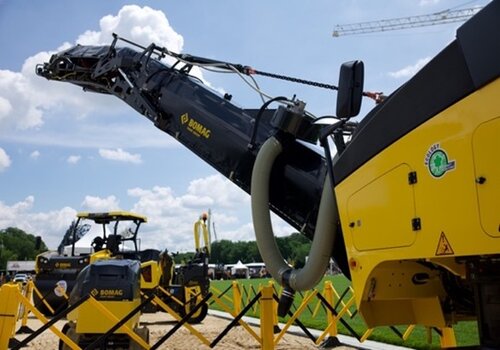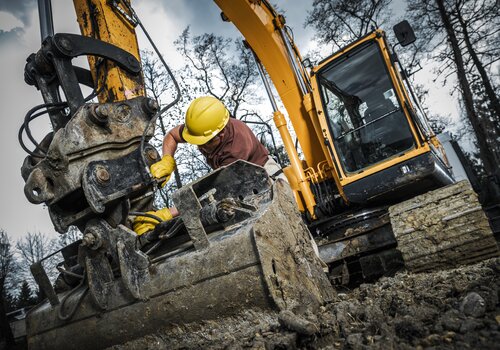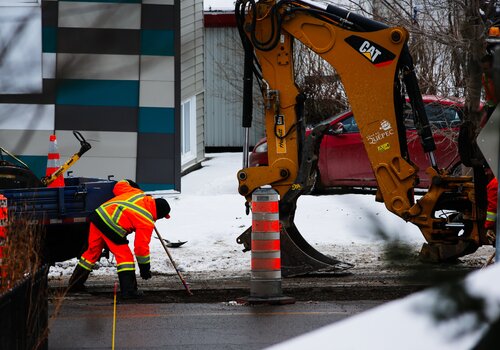The automation of earthmoving equipment is a trend that's gaining a lot of momentum across the construction industry. While the mining industry has been using autonomous vehicles (AV) for the past decade, the construction industry now has innovative AV options that can significantly boost efficiency, safety and profitability. AV technology is changing how contractors approach projects, allowing more work to be done faster and safer than ever before.
Let’s take a look at the latest trends in autonomous earthmoving technology and how this new technology will transform jobsites large and small across the country.
LATEST TRENDS
The automation of earthmoving equipment, such as excavators, bulldozers and loaders, has seen significant advancements thanks to developments in artificial intelligence (AI), machine learning and robotics. Modern autonomous equipment can perform various tasks with minimal human intervention, from grading and excavating to loading and dumping materials. These machines are equipped with sensors and GPS technology, allowing for precise operations tailored to the specific needs of a construction site.
Fully automated earthmoving equipment is not ubiquitous in construction – yet. As more and more jobsites utilize this emerging technology, the University of Illinois’ Grainger College of Engineering is slated to construct a new research and development center dedicated to advancing autonomous construction technologies.
Teleo, a company that builds autonomous technology for heavy construction equipment, is working with a number of contractors to deploy AV technology on project sites. And Caterpillar®, who has been working on AV technology for 25 years, has nearly 600 autonomous haul trucks operating at 25 customer sites around the world.
BENEFITS OF USING AUTONOMOUS TECHNOLOGY ON JOB SITES
Increased Efficiency and Productivity: Autonomous equipment can operate continuously without fatigue, leading to significant improvements in project timelines. These machines can work in unison, seamlessly coordinating tasks to minimize downtime and enhance productivity.
Enhanced Safety: By reducing the need for human operators in potentially hazardous conditions, autonomous equipment contributes to safer job sites. Automated machines can be operated remotely, decreasing the risk of accidents related to equipment operation.
Precision and Quality: Autonomous earthmoving equipment can execute tasks with high precision, thanks to advanced navigation and control systems. This accuracy leads to better quality work in less time.
Environmental Benefits: Automated machines often boast improved fuel efficiency and can be programmed to operate in ways that minimize environmental impact, such as reducing unnecessary idling and rework. All this adds up to a more sustainable industry.
COST CONSIDERATIONS
While the initial investment in autonomous equipment can be higher than that for traditional machinery, the long-term benefits can outweigh these costs. Improved efficiency and productivity lead to faster project completion times, potentially reducing labor and operational costs. Additionally, the enhanced precision and reduced risk of accidents can translate to savings on materials and insurance premiums, respectively.
Many companies are developing retrofitting technology for heavy machines. This allows a fleet, including specialized heavy machines, to be converted to autonomous use as needed. It also allows an operator to switch between manual operation and remote, depending on the situation.
TRAINING AND SKILL DEVELOPMENT
The shift towards autonomous equipment necessitates a change in the skill set required by the workforce. Operators will need to be trained to manage and oversee autonomous machinery rather than control it manually. Investing in training and development is crucial for contractors to ensure their teams can effectively leverage this technology.
It is important to note that while AV will increase efficiency, there will still be plenty of jobs available for operators. With the proper training, many current machine operators could become AV operators, advancing along with the latest technology.
RENTING VS. BUYING
Deciding whether to rent or buy autonomous earthmoving equipment depends on several factors, including the frequency of use, financial capacity and long-term business strategy.
Renting offers flexibility and allows contractors to access the latest technology without committing to a significant upfront investment. It can be a cost-effective option for short-term projects or those requiring specialized equipment not regularly used. Rental agreements often include maintenance and repair services, reducing the burden on the contractor's resources.
Buying, on the other hand, is more suitable for contractors with a steady demand for specific equipment. Ownership allows for complete control over the machinery, making it available whenever needed. While the initial cost and maintenance responsibilities are higher, buying can be more economical in the long run for businesses that frequently use autonomous earthmoving equipment.
LOOKING AHEAD
The adoption of autonomous earthmoving equipment represents a significant shift in the construction industry, offering many benefits in efficiency, safety and quality. However, contractors must carefully consider the implications on costs, workforce training, and whether renting or buying aligns best with their operational needs. By staying informed on the latest trends and making strategic decisions, construction contractors can effectively integrate autonomous technology into their operations, positioning themselves at the forefront of the industry's future.
Photo credit: MAXIM IBRAGIMOV/BIGSTOCKPHOTO.COM












